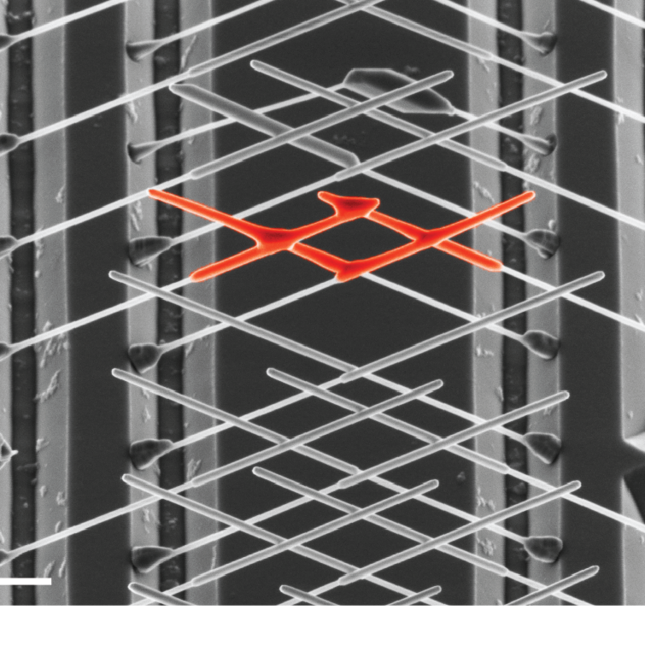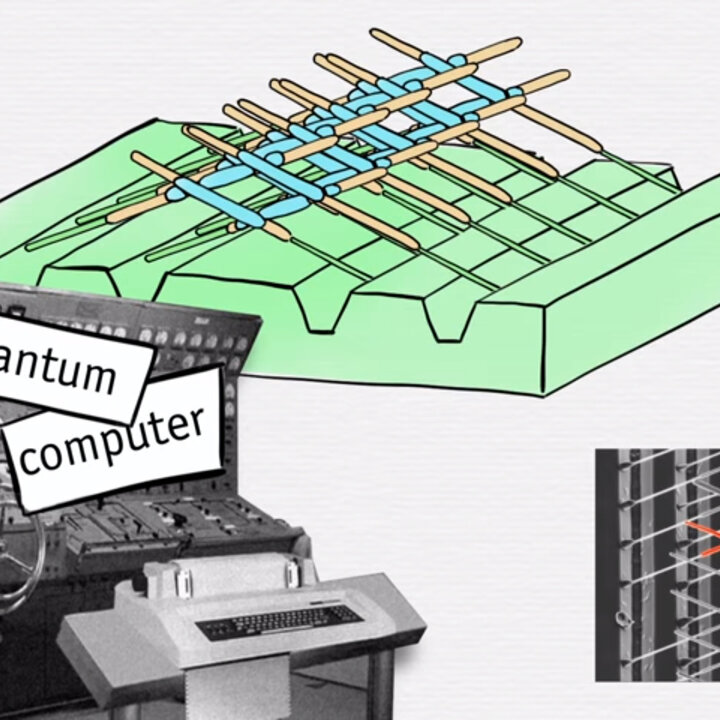
In our group, we synthesize materials and nanoscale devices which exhibit unconventional quantum-physical effects. We focus on heavy-element semiconductors like InSb and PbTe, as they feature large spin-orbit couplings and small effective masses. Given their spatial confinement in two dimensions, nanowires of these types of materials are ideal candidates for experiments which rely on low-dimensional effects. To grow nanowires, we use state-of-the-art metal-organic-vapour-phase epitaxy and molecular-beam epitaxy. We put great effort into maximizing the crystalline quality, purity and structural complexity of our materials and devices. As a major achievement, we have proven the existence of Majorana fermions at the interface of an InSb nanowire with a superconductor. In the future, we want to overcome the limitations of this first proof-of-concept device, and ultimately use Majorana fermions as building blocks for quantum computation. To this end, we have already improved the transparency of the superconductor-nanowire interface by an optimized deposition approach, and we will grow complex nanowire networks with in-situ-deposited superconducting islands to allow for braiding of the Majorana quasiparticle. Furthermore, we are going to investigate nanowires and films made from materials which feature an intrinsically nontrivial band-topology (‘topological insulator’), which should give rise to Majorana quasiparticle formation without an external magnetic field.
In our group, we synthesize materials and nanoscale devices which exhibit unconventional quantum-physical effects. We focus on heavy-element semiconductors like InSb and PbTe, as they feature large spin-orbit couplings and small effective masses. Given their spatial confinement in two dimensions, nanowires of these types of materials are ideal candidates for experiments which rely on low-dimensional effects. To grow nanowires, we use state-of-the-art metal-organic-vapour-phase epitaxy and molecular-beam epitaxy. We put great effort into maximizing the crystalline quality, purity and structural complexity of our materials and devices. As a major achievement, we have proven the existence of Majorana fermions at the interface of an InSb nanowire with a superconductor. In the future, we want to overcome the limitations of this first proof-of-concept device, and ultimately use Majorana fermions as building blocks for quantum computation. To this end, we have already improved the transparency of the superconductor-nanowire interface by an optimized deposition approach, and we will grow complex nanowire networks with in-situ-deposited superconducting islands to allow for braiding of the Majorana quasiparticle. Furthermore, we are going to investigate nanowires and films made from materials which feature an intrinsically nontrivial band-topology (‘topological insulator’), which should give rise to Majorana quasiparticle formation without an external magnetic field.
